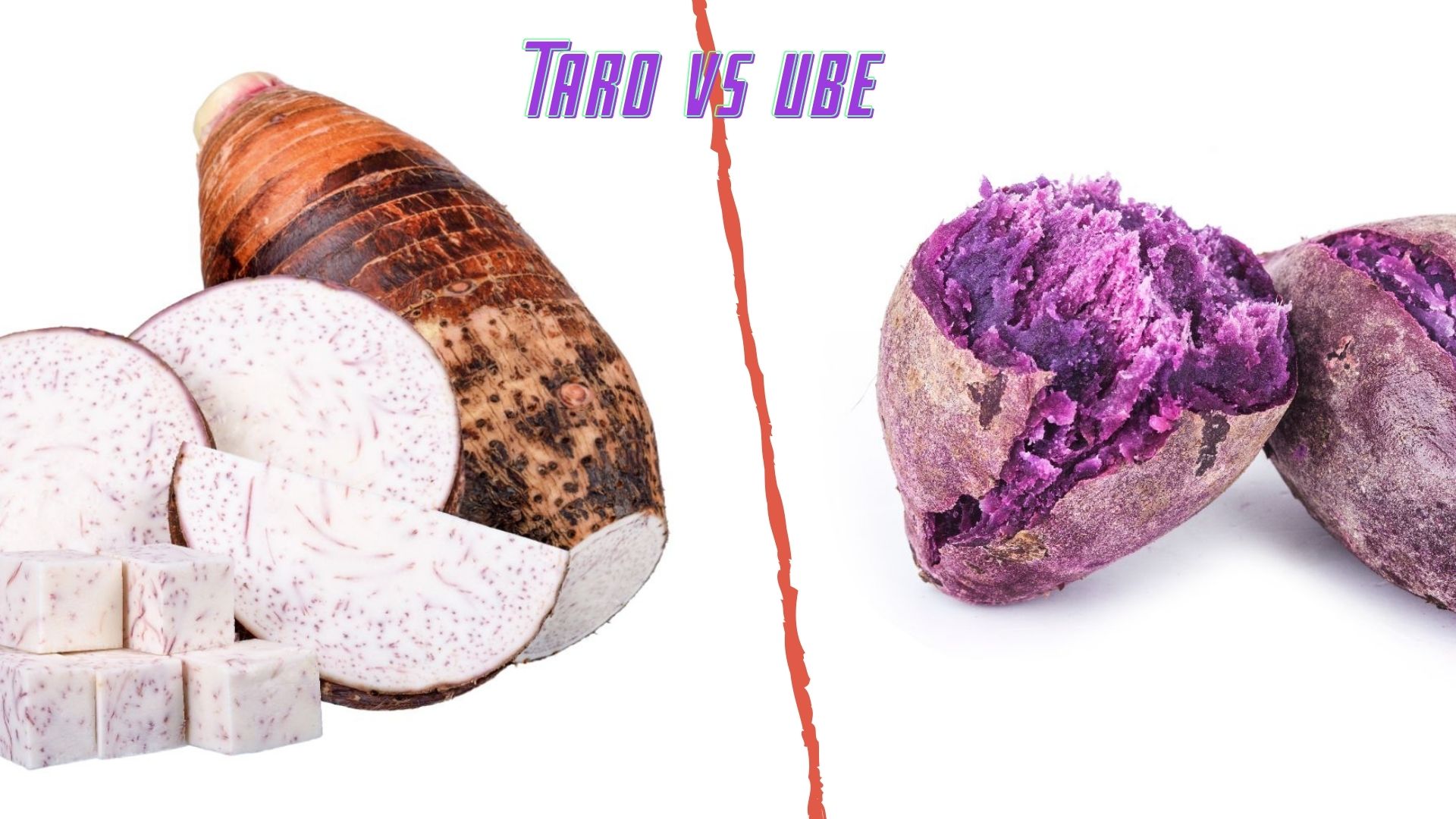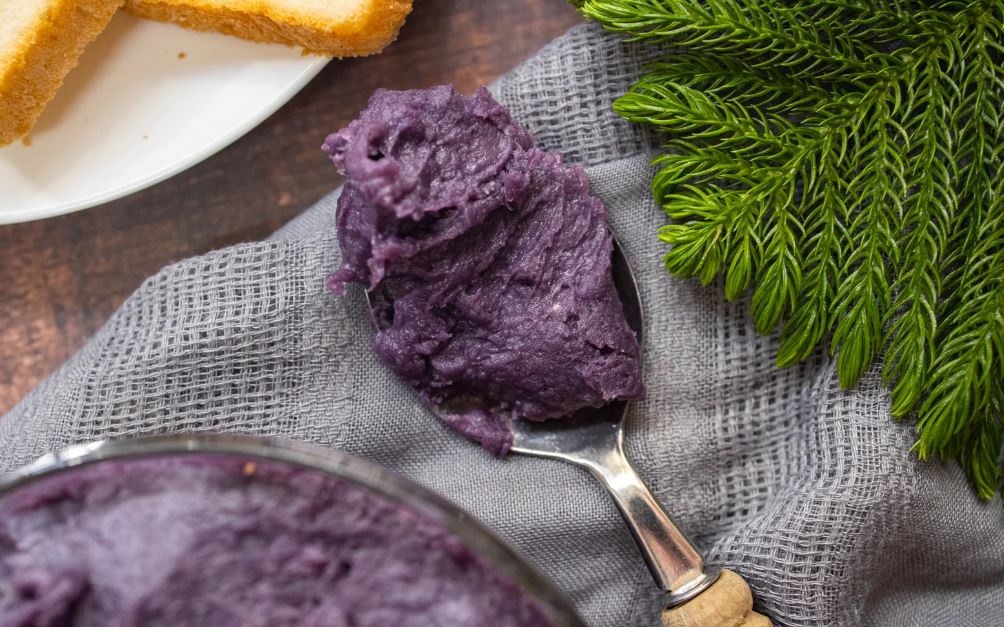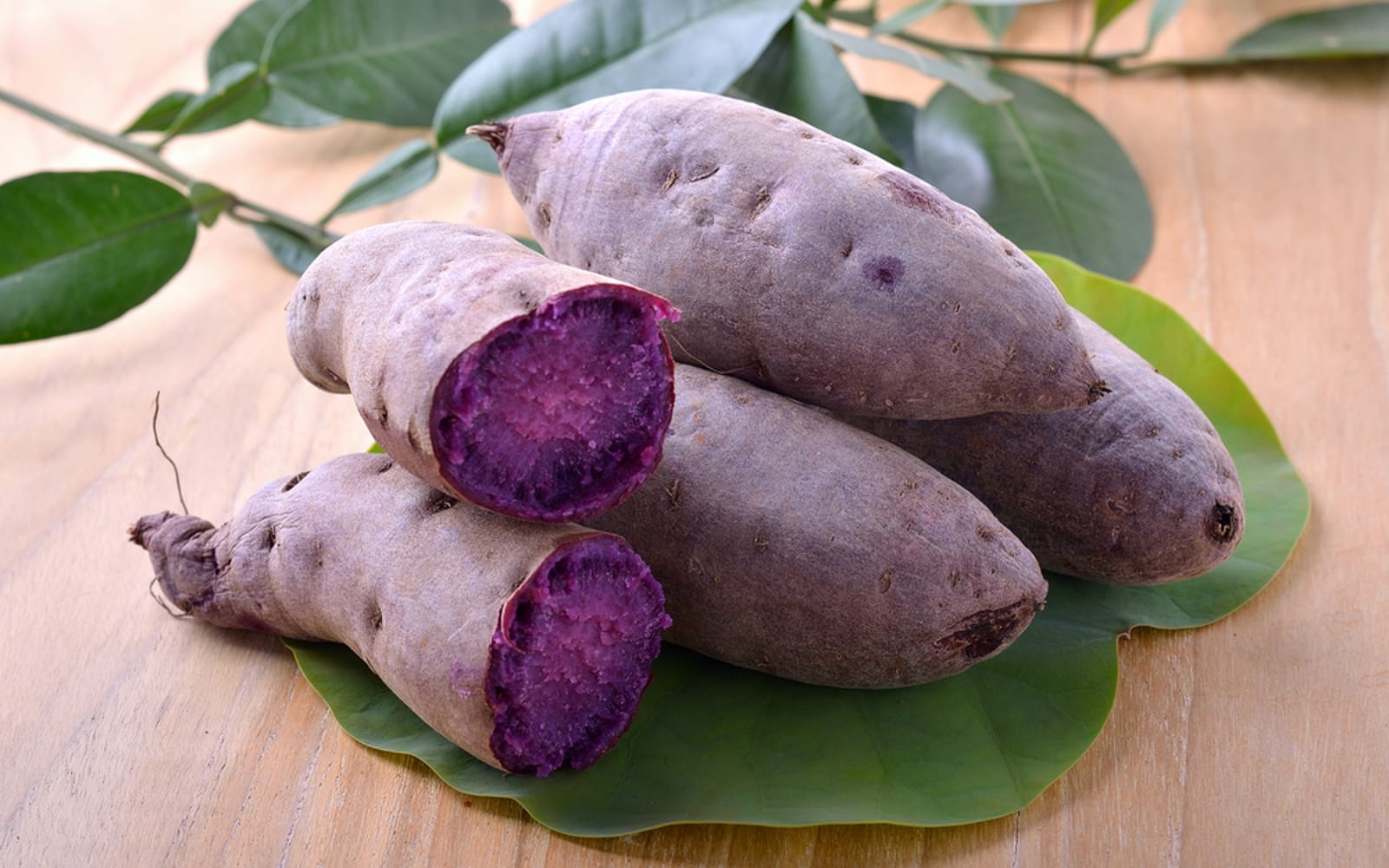Taro Vs Ube: A Colorful Comparison of Root Vegetables
Ube is a root vegetable known as “purple yam” that originates from the Philippines. It is rich in fiber, antioxidants, carbohydrates, potassium, and vitamin C. Ube may help prevent diabetes by stabilizing blood sugar. Ube has a purple color, becomes even darker when cooked, and has a creamy texture. The flavor of ube is sweet with nutty, vanilla undertones. Ube is commonly used in boba tea and to flavor ice cream in the United States. In Filipino cuisine, ube is boiled, mashed with condensed milk, and used in sweet treats such as jam or coconut ube pudding. Ube is also used to color bread, cakes, and other baked goods.
Taro is a tuber that originated in Southeast Asia and is also found in India, Hawaii, and Australia. Taro is used in cuisines across Africa, India, and the South Pacific Islands. The name taro comes from a Māori word meaning “bread,” and it is believed to be one of the earliest domesticated crops. Taro is a heart-healthy and fiber-rich food. Taro and ube are both starchy tubers commonly used in milk teas, desserts, and savory dishes. Ube is from the Philippines, while taro is grown in various tropical regions. Ube has dark purple flesh and taro has light-colored flesh with purple specks. Both have a subtly sweet taste with nutty and vanilla undertones, but ube is sweeter than taro. Ube is usually used in desserts, while taro is used in both desserts and savory dishes. It is important to note that both the flesh and leaves of the taro plant are toxic and should be cooked properly to avoid illness. Taro and ube are different plant species with distinct textures, flavors, and nutritional profiles. Ube is sweeter than taro. Both can be used in desserts and boba tea, especially when paired with coconut.
Continue Reading

